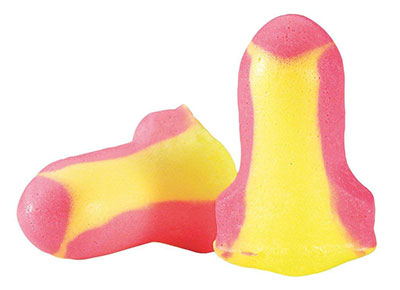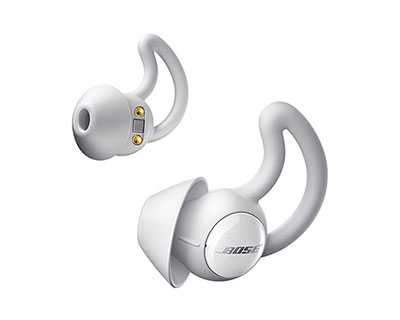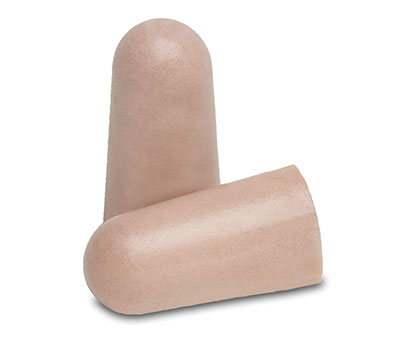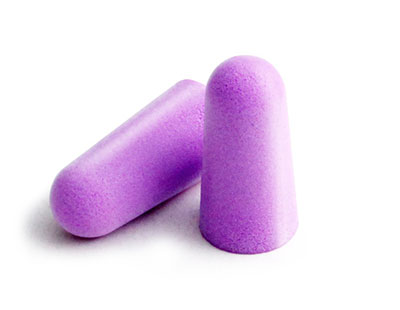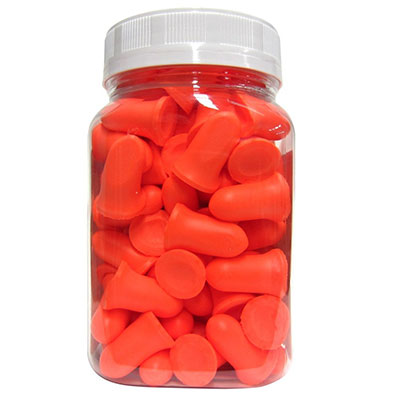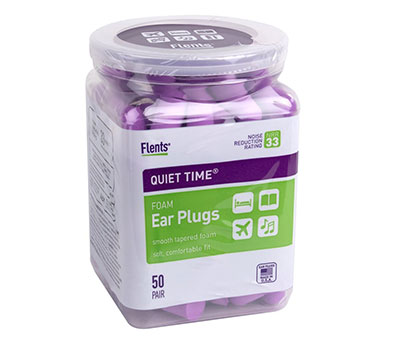Earplugs can be a vital asset in improving your overall sleep. Sometimes it’s very difficult to achieve deep sleep, and you can’t always shut out distractions nearby, which is what makes them so useful in giving you relaxation
Everyone needs good sleep to stay healthy, and when precious sleep is interrupted by disturbance, we don’t function as well as we should. And when that happens, our well-being suffers, which leads to other health complications.
That’s why we’ve created a guide of top rated earplugs for sleeping to help you out on picking the best ones to give you good rest.
Expert Recommended Best Earplugs
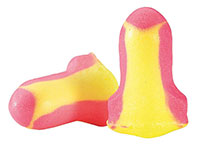 | Howard Leight by Honeywell |
| CLICK HERE FOR PRICE |
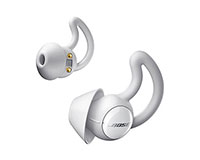 | Bose Noise Masking Sleepbuds |
| CLICK HERE FOR PRICE |
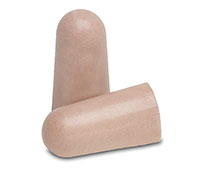 | Mack’s Ultra |
| CLICK HERE FOR PRICE |
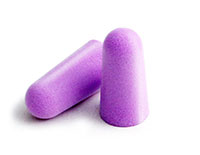 | Moldex |
| CLICK HERE FOR PRICE |
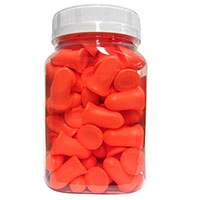 | The Ear Buddy Premium |
| CLICK HERE FOR PRICE |
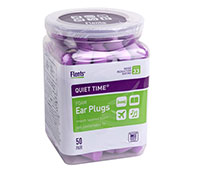 | Flents Quiet Time |
| CLICK HERE FOR PRICE |
6 Top-Rated (Comfortable) Earplugs for Sleep
Howard Leight by Honeywell – High Visibility
HIGHLIGHTS:
- Noise Reduction Rating (NRR) of 32 decibels
- Self-Adjusting foam
- Fits smaller and larger ears
- Contoured T-shape design
These were our editor’s choice for great noise reduction and quality comfort. The Howard Leight by Honeywell earplugs is made to securely fit into your ears with soft self-adjusting foam, and provide robust ear protection for extended periods of time.
These come in a yellow and magenta coloring, making them easy to notice even from a distance, which could come in handy for employees who work in noisy environments, or anyone else who might like something easy to spot and find.
These have a T-shape contour and closed-cell foam that is protective against dirt, dust, and other particles, and come in a box of 200 pairs for a fair price point. They can block out sound up to 32 dB, making them quite effective at keeping things nice and quiet for sleep or any other activity.
Bose Noise Masking Sleepbuds – Tiny Sleep Buds
HIGHLIGHTS:
- Use soothing sounds to cover up noise
- Noise-masking design
- Three included ear tip sizes for the best fit
- Work exclusively with the Bose Sleep app
Different types of sleep buds may perform differently than each other. Some are more of the traditional foam variety that you might be used to, while others are a bit more high tech in design. The Bose Noise Masking Sleepbuds are the latter, boasting exceptional ambient sound technology to give you deep quiet.
These buds use Bose noise canceling technology to play soothing sounds that keep you calm and keep disturbance out. They run on rechargeable batteries that give about 160 hours or so of use, which charge time taking about 8 hours.
These buds fit comfortably and blend in like regular headphones, except help you to sleep soundly. They’re easily stored in an included carrying case, and can connect directly with your smart device via Bluetooth for experience customization. They are somewhat higher in price, but the technology and design of this product make up for it.
Mack’s Ultra – Soft Foam Earplugs
HIGHLIGHTS:
- Noise Reduction Rating (NRR) of 33 decibels
- Made with low-pressure Comfy Cush Comfort Foam
- Ideal for smaller and larger ears
- Contoured T-shape design
- Made in the USA
As anyone who’s ever been a student knows, studying can be quite an ordeal when you’re trying to focus. Noisy distractions also don’t help, and can really bring down the quality of your schoolwork. Mack’s Ultra Soft Foam Earplugs aren’t just ideal for students, but anyone else looking for comfortable quiet.
These come in a package of 50 pairs, and are very affordable in price, making them perfect for those on a budget, whether you’re a university student or not. They can block out sound up to 32 dB, meaning they’re a great solution for noisy environments where you just need focus.
The tapered foam should form comfortably to your ears and stay in place for as long as you need them to. They’re colored in a soft shade of beige, giving them a somewhat nonchalant appearance, making them an overall solid pick for quiet.
Moldex – Latex & PVC Free
HIGHLIGHTS:
- Noise Reduction Rating (NRR) of 33 decibels
- Shaped to fit even small ear canals
- Latex free and PVC free
- Made in the USA
It’s important to know what materials are in your purchase, as you don’t want to wind up with a product you’re allergic to. Some people don’t react well to latex or other natural rubbers, meaning that earplug buying could potentially be difficult, but it doesn’t need to be. The Moldex Soft Foam Ear Plugs have exceptional quality for latex free ones and should suit you well.
The latex and PVC free foam is light and durable, yet can easily conform to ear canals and stay put when you need them to. They’re tested to be able to block out 33 dB of sound, giving you extra peace and quiet, while also keeping dirt and other particles out.
This package comes with 20 pairs (purple color) and a convenient carrying case to keep yours secure for when you’re on the go or at home. At a fair price point as well, you can’t go wrong with these.
The Ear Buddy Premium – Multi-Purpose
HIGHLIGHTS:
- Noise Reduction Rating (NRR) of 32 decibels
- Bell shaped for maximum comfort
- Made with highest-quality Polyurethane Foam
- Latex free
How well they can block out disturbances is a very important aspect of your purchase. Those needing absolute silence may want to look into this brand, especially those in exceptionally noisy environments.
These buds are made from non-abrasive polyurethane foam that doesn’t immediately rebound, meaning you should be able to easily fit them for a snug fit. It is capable of up to 32 dB of soundproofing, which is great for anyone who needs quiet, and the foam itself stays comfortable during use.
50 pairs (orange color) come with this package, meaning there’s enough to last you a good while. The low price point is also great for those conscious of their budget, and their durable quality makes them a good choice for just about everyone.
Flents Quiet Time – Multi-Purpose
HIGHLIGHTS:
- Noise Reduction Rating (NRR) of 32 decibels
- Latex free
- Made with soft foam for maximum comfort
- Made in the USA
The best thing about them is that they fit many different purposes. You can use them not just for sleep, but for travel, school, concerts, work, or just about anywhere else where you need to silence. Flents Quiet Time Ear Plugs gives you both comfort and quiet in many environments.
This product comes with 50 pairs (purple color) for an affordable price, making it an easy buy for those tight on money. The NRR decibel (dB) rating is 33, meaning that they’re well suited for keeping out the loudest of irritations. The foam material is latex-free soft and adaptable, so it should fit firmly while remaining comfortable.
The higher dB rating should make them function in most noisy environments. If that sounds convenient for you, you might want to consider a purchase.
Benefits Of Wearing Earplugs
The benefits of buying a pair cannot be underestimated. For starters, they are able to block out most irritation, which makes them great for sleep or when you just need to concentrate in a noisy environment. You can use these for when you have noisy sleeping partners who snore, while traveling, in traffic or other noisy places, and much more.
For anyone who likes quiet but can’t often get it, they also offer solace and peace of mind to allow you to focus or sleep or become calm in any hectic environment. They’re a sound investment for a variety of situations, and can make your life all that more soothing.
Buying Considerations
Type
Foam
Foam is the most common and most familiar material on the market, with the majority of them being foam. Foam plugs are made to compress and expand once inside ear canals, gradually filling in to create a sound barrier. Most foam ones are cylindrical in nature, and high-density polyurethane foam is usually the most efficient kind.
Silicone
While foam plugs penetrate the ear canal to create a barrier, silicone versions instead are designed to cover mainly the entrance of the canal, while not being as penetrative. They tend to be more expensive than foam, but also tend to be more convenient, as they’re typically easier to remove and can even be reused, unlike most foam types, most of the time.
Wax
Wax ones are typically less common than other types and much more expensive. They’re usually only suited to one-time use and can’t be reused like silicone and some foam types. Some people find them to be more effective than other materials at reducing sound, however, so this could potentially add a lot to their overall value.
Size of Earplugs
Be sure to pay attention to the size that a brand can accommodate. Some can fit most people but don’t expect all brands too. Check to see if multiple sizes are offered so you can choose the right product for you.
Size Of Ear Canal
You should have a somewhat fair guess of how your canals are shaped. Some brands are too wide or not wide enough for some people, which may give you discomfort. Trying on different models to see which ones fit you most comfortably isn’t a bad idea when considering which brand to purchase.
Purpose
Can yours be used in very loud environments? Are they good for concerts or sleep? Knowing what function yours are best suited for can help you find the best pair for your own needs, and potentially avoid some damage to your body, as getting improper ones could lead to poor sound reduction.
Noise Reduction Rating
Decibels, or dB for short, are used to determine noise reduction efficiency. The higher the decibels, the more your plugs will block out. Typically, the NRR scale runs from 20 to 34, with 20 being the lowest and 34 being the most effective. Depending on your needs, you may need plugs with a higher decibel rating if you’re going to be in exceptionally noisy environments.
Reusability
Typically, most are one-time use, meaning you throw them away after you’re done with them. Some material types, however, are more reusable than others. Silicone types tend to be reusable, while most foam pairs are not, though some foam materials are reusable so check with the manufacturer.
Moldability
How well they contour to the shape of your ear canals is important in ensuring a tight seal. Ill-fitted ones that don’t mold well won’t give you comfort or proper quiet. Different types of plugs like foam mold after being compressed and inserted, while silicon forms at the entrance.
Price
The price will vary between different brands and types, with some being cheaper than others, depending on quality and material. Reusable plugs tend to be more expensive, but offer more potential longevity. Keep price in mind if you’re looking to save money, as some cheaper brands may offer the same benefits as more expensive ones.
What Are Earplugs?
They are similar to headphones in that they block outside clamor, but instead of playing music, they’re made specifically for noise reduction. They come in various material types and designs, with some traditional versions being made from materials like foam and silicone, while others are electronic, utilizing noise-canceling technology to help boost soundproofing.
They are especially vital for many people who work or inhabit particularly loud environments and need focus or calm in their daily routine. People who have trouble sleeping often use them, along with those who work around loud equipment and don’t want to damage their hearing.
Who Should Buy One?
Snoring Partners
It can be quite difficult to get a good night’s rest when you’re sleeping next to a loud snoring partner. Usually, people either wake them up or move to another room, which can cause a fair bit of inconvenience. They are great for this because not only will you block out the commotion and sleep soundly, but you won’t disturb your partner.
Travelers
Those who find themselves traveling a lot might also find them helpful. It’s sometimes difficult to get rest on a plane or car or train, and there might be other irritations around too that keep you from enjoying peace and quiet. Proper plugs can help alleviate this and make your travels all the more enjoyable.
Noisy Environment
Anyone who finds themselves in a particularly noisy area might also benefit. It can be difficult to achieve quiet when you need to be in a particular location for an extended period of time, which is why they might help you tremendously in soundproofing.
Health Risks
Ear infections
It’s absolutely vital to clean yours out after you use them, as you could get an infection if you don’t. Most plugs are one-time use to prevent bacteria spread, but reusing plugs and failing to keep good hygiene can result in bacteria buildup, leading to health problems. You can easily clean them with warm water and soap.
Reduced Hearing
Another health risk associated with elongated use is that you won’t be able to hear danger in emergency situations. As noise is reduced, so too is your awareness of your surroundings, which could potentially lead to life-threatening events. Be sure to only use them in safe environments where you can closely monitor any risks at hand.
Earwax Impaction
Earwax is important, as it keeps bacteria and infections at bay. Proper drainage is also important, which can be blocked up by them when used improperly or for too long, leading to wax impaction. You can help prevent this by cleaning yours regularly and making sure to only use clean ones.
Other Alternatives To Cancel Noise
Sound apps
Now more than ever is it easy to find good silencing tools to help you relax and sleep. There are a variety of smartphone apps you can download off your respective app store that comes with ambient and white noise selections. Some are free, while others might cost you money, so make sure to compare different apps to find the right one for you.
White Noise Machines
Sound apps aren’t the only alternative. White noise machines can make environments quieter by making sound signals that work to counteract external irritations, creating a quieter environment for sleep and tranquility. There are various types of sounds that white noise machines can make, like red, blue, brown, and pink noise, which all work differently.
Headphones
You might also be interested in headphones, which can help reduce outside noise by playing music or other ambient sounds. Noise-canceling headphones are also a great alternative and can block out noise effectively. Headphones come in various designs, like on-ear or over that suit different needs and preferences.
Learn More: How To Sleep With Noise
Frequently Asked Questions
Are Sleep Earplugs Safe For Kids
They are safe for children and are even recommended for certain conditions like noise hypersensitivity. Your child’s ears are more delicate than yours when it comes to noise, so purchasing some for your child can help protect them from permanent ear damage.
Is It Safe For Side Sleepers?
Side sleepers should avoid foam. Not only will they potentially slip out during the night if you sleep on your side, but they could potentially get pushed further down into your canal, causing health risks. Silicon is best because they’re not as penetrative as foam, nor will they stick out so much.
Can It Help You Sleep Better?
It can potentially make you sleep better, depending on what you’re looking to get out of them. If you’re looking for quieter, deeper sleep, that can be achieved through proper noise reduction accessories. They are a great choice for anyone looking for more silence to achieve a calmer state of mind and less interrupted sleep cycles.
How To Make DIY Earplugs?
You can make your own through a variety of means, like buying a custom molded kit online or at a store. Toilet paper also works as a short-term solution. Moisten a few wads of toilet paper, squeeze them until damp, then gently insert.
Cotton Balls can be rolled up, wrapped in plastic, and fitted for soundproofing.
Can It Block All Sounds?
There aren’t any that can completely block out all sounds. As noise is created by vibrations and air conduction, so some sounds will naturally reach your eardrums, and there currently aren’t any that can prevent that. With that being said, many products can still do a very effective job of keeping most sounds out.
Conclusion
Earplugs are a valuable addition to anyone who wants to get a bit quieter in their life. Not only can they help give you a better night’s rest, but they can also help you concentrate better on tasks at hand, and keep noisy distractions at bay.
They are normally pretty inexpensive, meaning that most people can get instant relief for a small price. When we lose out on sleep, we lose out on our health and well-being. You can’t afford poor sleep and all of the harm it will do to your body and mental performance, so an investment in noise reduction products can make you feel more refreshed and less stressed.
More Reading:

